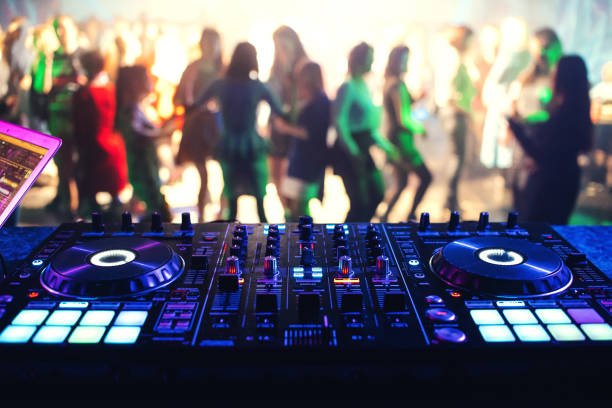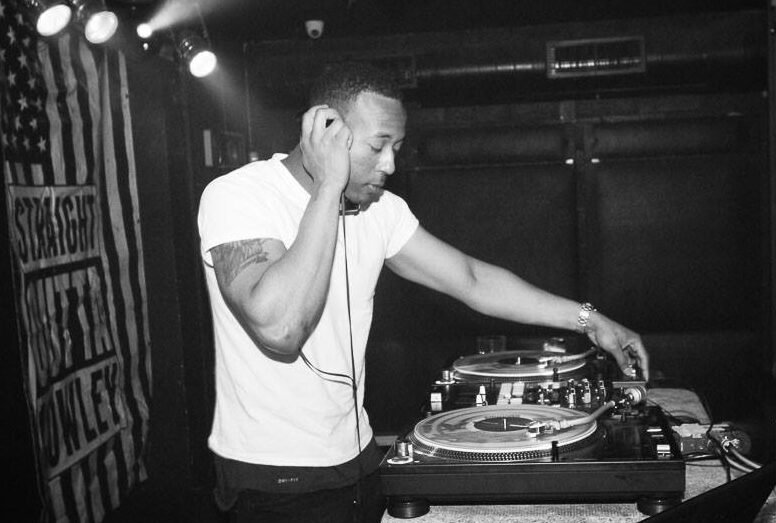Are you ready to take your DJing to the next level? As a beginner DJ, one of the most crucial investments you’ll make is in a pair of quality DJ studio monitors, also known as DJ speakers. Unlike regular speakers, studio monitors will help you hear every detail in your music and improve your mixing skills. In this comprehensive guide, we’ll walk you through everything you need to know about choosing your first DJ studio monitors, ensuring you make an informed decision that will elevate your skills and your sound.
Understanding DJ Studio Monitors vs. Regular Speakers
When you’re just starting out, you might wonder why you can’t just use your regular home speakers for DJing. The truth is, DJ studio monitors are a whole different beast.
DJ studio monitors are designed specifically for music production and DJing. They provide a flat frequency response, meaning they reproduce all frequencies at an equal volume level without emphasizing or “coloring” any particular range. This is crucial for accurately hearing your mixes and making precise adjustments.
Regular speakers, on the other hand, often enhance certain frequencies to make music sound more pleasing to the casual listener. While this might be great for enjoying tunes, it can lead to poor mixing decisions when you’re playing on a club or festival sound system.

Key Factors to Consider When Choosing DJ Studio Monitors
When selecting your first pair of DJ studio monitors, keep these crucial factors in mind:
- Sound Quality: Look for monitors that offer clear, balanced sound across all frequencies. Ideally, they should have a frequency response range covering 60Hz-20kHz or wider. (For reference, Hip Hop music typically emphasizes the low-end frequencies, particularly in the 40-60 Hz range for 808s and kick drums. Therefore, subwoofers are a useful addition depending on the range or your monitors.)
- Size: The size of your monitors should be appropriate for your space.
- Power: Ensure the monitors have enough wattage to fill your room without distortion.
- Connectivity: Check for compatible inputs with your DJ equipment.
- Budget: Determine how much you’re willing to invest in your sound.
Recommended Monitor Sizes for Different Spaces
The size of your DJ studio monitors should correspond to the size of your space. Here’s a quick guide:
- Small bedroom or dorm room: 4-5 inch monitors
- Medium-sized room: 5-6 inch monitors
- Large room or small studio: 7-8 inch monitors
Remember, bigger isn’t always better. In fact, 8-inch monitors are often too large for most home setups and can result in excessive bass accumulation and a muddled low-frequency response.

Active vs. Passive Monitors
For beginners, active monitors are generally the way to go. Here’s why:
- Active monitors have built-in amplifiers, making setup easier and eliminating the need for a separate amp.
- They offer more consistent sound quality as the amp is matched to the speakers.
- Passive monitors require a separate amplifier, which can be an additional cost and complexity you might not need when starting out.
Budget Considerations
DJ studio monitors come in a wide range of prices. As a beginner, you can find quality options in these price ranges:
- Budget: $100-$300 per pair
- Mid-range: $300-$600 per pair
- High-end: $600+ per pair
Remember, while it’s tempting to go for the cheapest option, investing in better quality monitors can significantly improve your mixing skills and save you money in the long run.
Top 5 DJ Studio Monitor Models for Beginners

PreSonus Eris 3.5 studio monitors are compact powerhouses with 50W of Class AB amplification and a 80Hz-20kHz frequency response. Although lacking a little on the low frequencies, these 3.5″ monitors deliver balanced sound with a 1″ silk dome tweeter for clear highs. Perfect for small spaces, they offer versatile connectivity, including balanced TRS and unbalanced RCA inputs. With front-panel volume control and a headphone jack, they’re ideal for beginners in tight setups.

Pioneer DJ DM-40D’s compact 4″ woofers deliver surprising punch with 38W of power across 70Hz-30kHz. Tailored for DJs, these monitors feature a front-loaded bass reflex system and convenient front aux input, ideal for bedroom DJs with limited space.

Mackie CR5-XBT’s are powerful 5″ monitors with 80W of power and Bluetooth connectivity. Their all-wood cabinet and specially designed waveguide ensure clear, balanced sound across 50Hz-20kHz, making them perfect for beginners who also want casual listening options.

KRK Rokit 5 G4’s are professional-grade monitors with 55W of power and an impressive 43Hz-40kHz range. The built-in DSP-driven EQ and front-firing port design allow for flexible placement in small rooms, delivering the iconic KRK sound that’s trusted by pros.

Adam Audio D3V’s are premium near-field monitors featuring Adam’s renowned X-ART tweeter and a 5″ woofer. With 60W of power and a 40Hz-50kHz range, these monitors offer unparalleled clarity and detail, plus convenient USB-C connectivity for the discerning beginner. If budget is not an issue, these are a great choice!
How to Set Up Your DJ Studio Monitors
Proper setup is crucial for getting the best sound from your monitors:
- Positioning: Place monitors at ear level, forming an equilateral triangle with your listening position.
- Room treatment: Use acoustic panels to reduce reflections and improve sound clarity.
- Connections: Ensure all cables are securely connected and of good quality.
- Calibration: Use a sound meter to balance the volume between left and right monitors.

Common Mistakes to Avoid
- Choosing monitors that are too large for your space: This can lead to bass buildup and unclear sound.
- Neglecting room acoustics: Even the best monitors won’t sound good in a poorly treated room.
- Overlooking the importance of stands: Proper monitor stands can significantly improve sound quality.
- Ignoring the break-in period: New monitors need time to “loosen up” for optimal performance.
FAQs
Q: Can I use DJ studio monitors for regular music listening?
A: Absolutely! While designed for accurate sound reproduction, many find DJ studio monitors excellent for enjoying music.
Q: Do I need a subwoofer with my DJ studio monitors?
A: For beginners, a subwoofer isn’t necessary. Focus on getting quality monitors first and consider adding a sub later if needed.
Q: How long do DJ studio monitors typically last?
A: With proper care, quality DJ studio monitors can last 5-10 years or more.
Conclusion
Choosing your first pair of DJ studio monitors is an exciting step in your journey as a DJ. By considering factors like room size, budget, and sound quality, you’ll be well on your way to finding the perfect monitors for your needs. Remember, the right monitors will not only improve your mixes but also enhance your overall DJing experience.
Ready to take your DJing to the next level? Check out our guide on the Best DJ Controllers of 2025 to complete your setup, and don’t forget to explore our Essential DJ Equipment for Beginners: Building Your First Setup for more tips on creating your ideal DJ workspace. Your journey From Bedroom to Club: Progressing Your DJ Career as a Beginner starts with the right equipment. Happy mixing!



